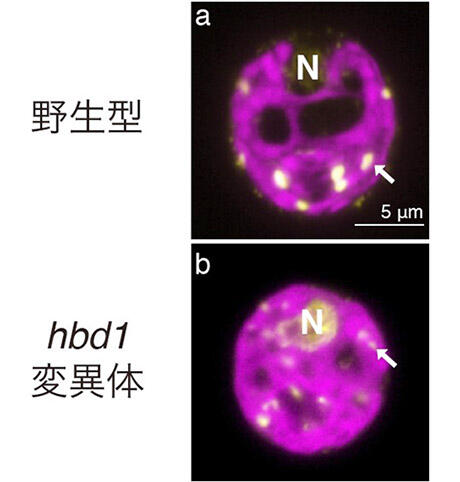The DNA clip (a protein that folds chloroplast DNA) was discovered by analysis of chloroplast nucleoids of the green alga Chlamydomonas. The discovery involved a research group consisting of researcher Mari Takusagawa, and Assistant Professor Yoshiki Nishimura, Graduate School of Physical Sciences, Kyoto University, and researchers from Yamaguchi University, Ibaraki University, and Ritsumeikan University. Chloroplast DNA, which is responsible for photosynthesis, can fold to form a compact chloroplast nucleoid. The folding mechanism itself was unclear.
The study group conducted a comprehensive mass spectrometry analysis on a group of proteins contained in chloroplast nucleoids purified from the green alga Chlamydomonas. A protein designated HBD1, which harbors two DNA-binding sites, was discovered. The disruption of the gene encoding HBD1 resulted in disruption of the chloroplast nucleoid, causing it to become disorganized and finely scattered. Atomic force microscopy revealed that HBD1 can bend and bridge DNA, much like a two-handed DNA clip.
"With this analysis, we were able to deepen the understanding of chloroplast nucleoid structure. We believe that the nucleoid structure is involved in DNA replication and repair, gene expression, and other functions. We intend to clarify these functions in future studies," said Professor Nishimura.

Fluorescence microscopy images of green alga Chlamydomonas cells stained with the DNA-specific fluorescent dye SYBR Green I.
In the wild-type strain, chloroplast nucleoids are observed in granular configurations (arrow) (a). However, when HBD1 was disrupted by genome editing, the chloroplast nucleoid was unfolded and finely scattered (b).
Credit: Kyoto University
This article has been translated by JST with permission from The Science News Ltd.(https://sci-news.co.jp/). Unauthorized reproduction of the article and photographs is prohibited.




